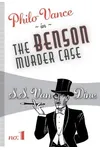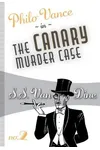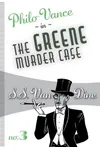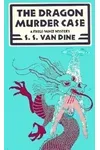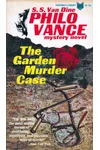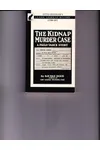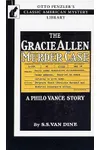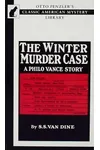Picture an American art critic turned detective fiction maestro, spinning tales of a suave sleuth in the glitzy 1920s—meet S.S. Van Dine! Born Willard Huntington Wright, this literary chameleon swapped highbrow art critiques for the thrilling world of crime novels, creating the iconic Philo Vance, a detective as cultured as he was cunning. Despite his early scorn for the genre, Van Dine’s mysteries captivated readers, blending intricate plots with Jazz Age flair.
Van Dine’s journey from avant-garde intellectual to bestselling author is a tale of reinvention, driven by a secret struggle and a passion for storytelling. His Philo Vance series not only redefined detective fiction but also left a lasting mark on pop culture, from books to blockbuster films.
The Making of S.S. Van Dine
Born on October 15, 1888, in Charlottesville, Virginia, Willard Huntington Wright grew up in Santa Monica, California, where his father ran a hotel. A self-taught scholar, he attended St. Vincent College, Pomona College, and Harvard but never graduated, preferring to chase knowledge in Munich and Paris. By 21, he was the literary editor of the Los Angeles Times, wielding sharp critiques and earning a reputation as an 'esthetic expert and psychological shark.' His early career saw him rubbing elbows with cultural giants like H.L. Mencken, editing The Smart Set, and championing modern art alongside his brother, abstract painter Stanton Macdonald-Wright.
A secret cocaine addiction led to a breakdown in 1923, confining Wright to bed. Bored and restless, he devoured over 2,000 detective novels, sparking an unexpected love for the genre he once mocked. This immersion inspired his pseudonym, S.S. Van Dine—supposedly from 'steamship' and an old family name, though no Van Dines appear in his lineage—and the creation of Philo Vance.
S.S. Van Dine’s Unforgettable Stories
Van Dine’s Philo Vance series, launched with The Benson Murder Case in 1926, introduced a detective unlike any other: a wealthy, monocle-wearing aesthete with a knack for solving murders through logic and cultural savvy. Set in Jazz Age Manhattan, the novel follows Vance as he unravels the murder of a playboy stockbroker, using clues like missing false teeth to catch a cunning killer. Its intricate plot and fair-play puzzle style set a new standard for detective fiction.
The Canary Murder Case (1927) upped the ante with a glamorous singer’s murder, blending showbiz intrigue with Vance’s cerebral sleuthing. The Greene Murder Case (1928) tackled a dysfunctional family’s serial killings, showcasing Van Dine’s knack for complex, clue-driven narratives. Later works like The Gracie Allen Murder Case (1938) experimented with humor, though critics found them less compelling. Van Dine’s ornate prose, peppered with art references and footnotes, contrasted with the era’s emerging hard-boiled style, earning both praise and playful jabs, like Ogden Nash’s quip: 'Philo Vance needs a kick in the pance.'
His 12 novels, published between 1926 and 1939, were global hits, translated widely and adapted into films starring William Powell and Basil Rathbone. Van Dine’s emphasis on fair play—where readers could solve the mystery alongside Vance—influenced giants like Ellery Queen and Agatha Christie.
Why S.S. Van Dine Matters
S.S. Van Dine elevated detective fiction from pulp to art, codifying the 'Golden Age' puzzle plot with his 1928 essay, 'Twenty Rules for Writing Detective Stories.' His Philo Vance series bridged high culture and mass entertainment, captivating everyone from World War II POWs to casual readers. As an art critic, he predicted the rise of color abstraction, influencing American modernism alongside his brother’s Synchromism movement.
Though his later works waned in popularity as hard-boiled detectives like Sam Spade took over, Van Dine’s legacy endures in the genre’s evolution. His ability to weave intellectual depth into thrilling mysteries remains a benchmark for crime writers.
- Born: October 15, 1888, Charlottesville, Virginia
- Died: April 11, 1939, New York City
- Key Works: The Benson Murder Case, The Canary Murder Case, The Greene Murder Case
- Pseudonym Origin: Claimed 'S.S.' from steamship and 'Van Dine' from family, though unverified
Snag The Benson Murder Case and dive into S.S. Van Dine’s dazzling world of clues, culture, and crime!
